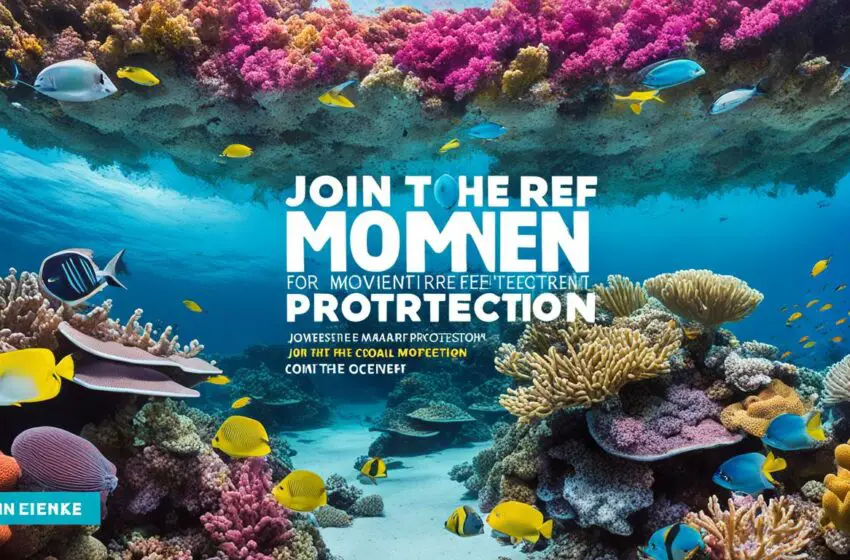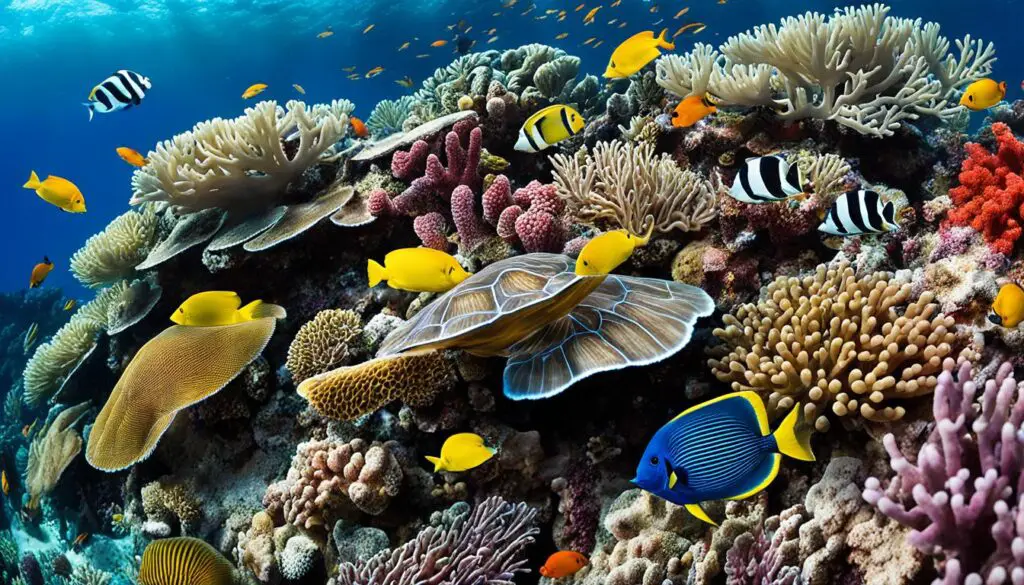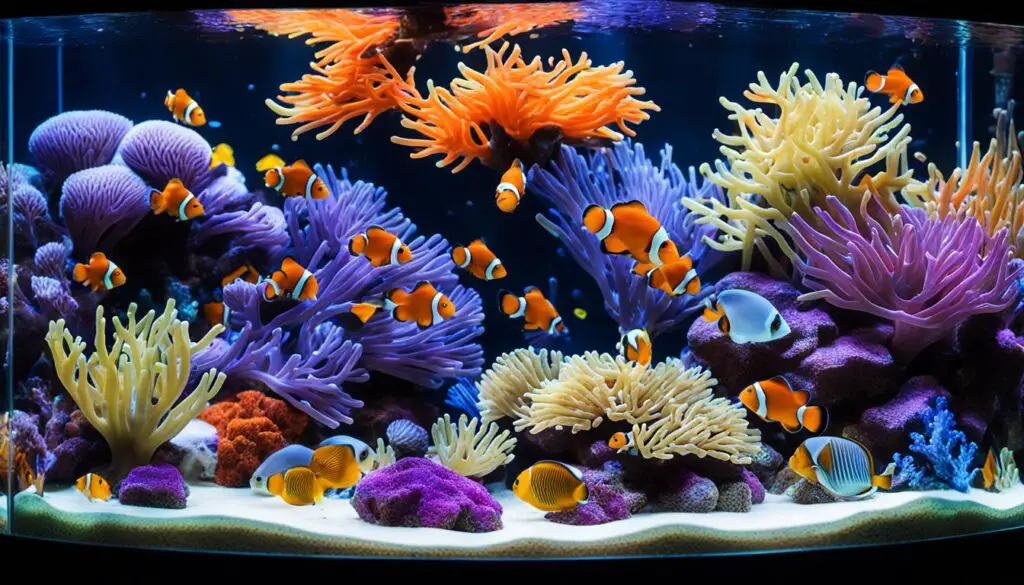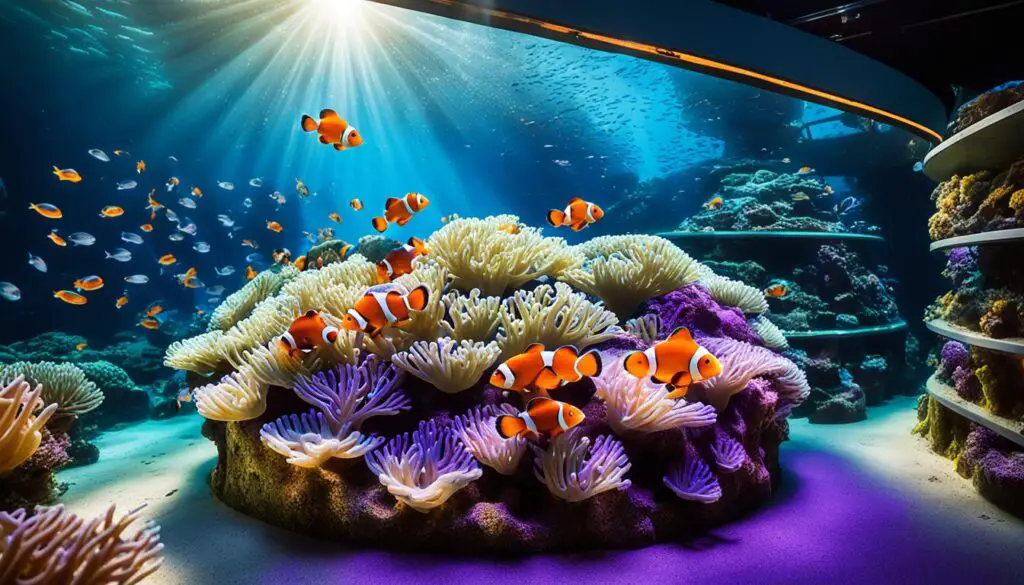Coral Reef Protection Efforts: Making Waves: Join the Movement for Coral Reef Protection!

Hello, fellow ocean lovers! I am exploring the amazing world of coral reefs and their beauty. I’m here to talk about why we must protect them. And how you can help make sure they stay healthy and beautiful.
Did you know, 25% of sea creatures depend on coral reefs to survive? These living cities underwater are crucial for our planet. They give home to millions, help feed people, and protect coasts. About 500 million folks rely on them directly, showing how valuable they are to us and nature.
But now, coral reefs are in great danger. Climate change is causing them harm on a big scale. We must act fast to save them.
The Coral Reef Alliance (CORAL) is leading this charge. They work hard to protect and bring back these special places. They’re ensuring our kids and grandkids will still see their wonders.
Key Takeaways:
- Coral reefs are essential for the survival of 25% of all marine life.
- Approximately 500 million people rely on coral reefs for food, income, and coastal protection.
- The Coral Reef Alliance (CORAL) is dedicated to protecting and restoring coral reefs globally.
- Climate change poses a significant threat to coral reefs.
- You can join the movement for coral reef protection and make a difference!
Now that we understand why coral reefs matter, let’s do something about it. We can help protect these incredible places for the future. Together, let’s work to keep the magic of coral reefs alive and well!
Understanding the Importance of Coral Reefs
Coral reefs are known as the “rainforests of the sea” because they have so many different creatures. They cover less than 1% of the ocean floor but help 25% of all ocean life. This means they’re key to the survival of many marine beings.
These reefs are home to over a million species. Among them are bright fish, corals, sea turtles, and even sharks. They also shelter mollusks, dolphins, and more. These creatures need the reefs for food and a safe place to live.
Coral reefs do more than just help sea life. They protect our coasts too, acting as natural walls against strong waves and storms. This is very important for people living near the sea.
Not only are coral reefs beautiful, but they’re also a big draw for tourists. Countless visitors travel to see them every year. For indigenous people, these places are sacred and important spiritual sites.
Plus, coral reefs help in the search for new medicines. Many plants and animals in the reefs may have healing qualities. This could lead to new cures for diseases in the future.
I think the ocean is one of the most amazing and beautiful places in the world, and coral reefs are a testament to its wonders. The amount of life and biodiversity they support is truly remarkable.” – Marine biologist Emma Thompson.

Coral reefs are important both for the life they sustain and the services they provide. It’s crucial we protect them for their own sake and for our benefit too.
Taking Action to Protect Coral Reefs
Coral reefs need our help to face many threats. These include climate change, overfishing, and pollution. To help, setting up marine protected areas is key. They reduce harmful activities and keep the reefs’ balance safe.
Another big step is cutting down on pollution in the water. We can do this by stopping runoff from the land. It’s also important to restore reefs that have been harmed. Efforts like coral farming and making new reefs can bring back damaged areas. This is crucial for the future of coral reefs.
It’s vital to keep an eye on reef health. This lets us see if our protection work is effective. We can also find new threats and check how well we’re restoring reefs. Lastly, fighting climate change is a top priority. Lowering carbon emissions helps keep the oceans from getting too warm. This is essential for the reefs’ long-term survival.
FAQ
How are coral reefs important to marine life?
Coral reefs are home to 25% of sea creatures. This is surprising because they cover less than 1% of the sea. These reefs give fish, plants, and animals food, a home, and safety.
What is the significance of coral reefs for humans?
People rely on coral reefs for many things. They protect our shores and bring in money from tourists. They’re also important for medicine because we find new drugs in reef life.
What are the primary threats to coral reefs?
Many dangers hurt coral reefs. Climate change and ocean acidification are big threats. So are overfishing, harmful fishing, pollution, and development near the coast. These things are destroying coral reefs.
How can marine protected areas (MPAs) help protect coral reefs?
Marine protected areas, or MPAs, are safe places for coral reefs. Here, fishing and other harmful activities are limited. This helps marine life and the reef heal, keeping them healthy.
What can be done to reduce pollution and protect reef waters?
To stop water pollution, we need to act on land. This means better waste management and farming that doesn’t harm the sea. It also means teaching people why clean sea water is so important.
How can damaged coral reefs be restored?
To fix damaged reefs, we can grow and replant pieces of coral. We also make fake reefs to help. These actions can bring back the homes and safety that coral reefs provide.
Why is regular monitoring of reef health important?
Checking on reef health often is key. It shows if our protection work is paying off. It helps us catch and stop problems early. This way, we can keep the reefs safe and healthy.
What is the role of climate change in coral reef degradation?
Climate change is a main reason why reefs are dying. Warming seas and acidification stress corals, leading to bleaching. We must cut down on carbon to save these beautiful and important ecosystems.



